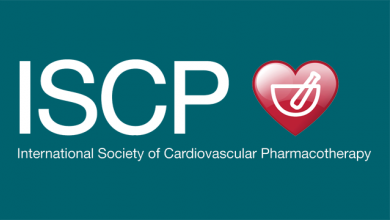Search results
Author(s):
Ayumi Katayama
,
Masafumi Funamoto
,
Kana Shimizu
,
et al
Added:
3 years ago
Best Abstract Award – Second prize
Topic: Heart Failure (Basic), Molecular Cardiology
Introduction
A major morphogenic change in heart failure is the hypertrophy of individual cardiomyocytes. Suppressing cardiomyocytes hypertrophy enables the prevention and treatment of heart failure. Although many experimental studies and clinical intervention trials have shown the cardioprotective effect of…
View more
TBL1 Suppresses Cardiomyocyte Hypertrophy by Regulating the Interaction Between HDAC3 and GATA4
Author(s):
Yasufumi Katanasaka
,
Masatoshi Namiki
,
Yoichi Sunagawa
,
et al
Added:
3 years ago
Article
Author(s):
Satoshi Shimizu
,
Yoichi Sunagawa
,
Kodai Hara
,
et al
Added:
3 years ago
Topic: Heart Failure (Basic), Molecular Cardiology
Introduction
The zinc finger protein GATA4 is a transcription factor that associates with the intrinsic histone acetyltransferase p300 and regulates myocardial transcriptional activity in response to hypertrophic stimuli. It is known that GATA1, another member of the GATA transcription family, forms a homo-dimer and regulates transcriptional…
View more
Author(s):
Mikuto Tojima
,
Yasufumi Katanasaka
,
Yoichi Sunagawa
,
et al
Added:
2 years ago
Author(s):
Kristian Wachtell
Added:
3 years ago
Left ventricular (LV) hypertrophy is a form of pre-clinical cardiac disease that may be induced by either pressure or volume myocardial overload, as well as genetic factors and a variety of other stimuli. Pressure overload, as exemplified by aortic stenosis, and volume overload, as exemplified by regurgitant aortic or mitral valve disease or chronic anaemia, initiates growth of cardiac myocytes…
View more
Author(s):
Kazuma Hanajima
,
Yusuke Miyazaki
,
Yasufumi Katanasaka
,
et al
Added:
3 years ago
Topic: Heart Failure (Clinical), Cardiomyopathy, Myocarditis
Background
The mortality of heart disease has been increasing in all over the world. Cardiac hypertrophy is an important risk factor for heart failure. We have previously reported that protein arginine methyltransferase 5 (PRMT5) specific inhibitor EPZ015666 (EPZ) suppressed cardiomyocyte hypertrophy in neonatal rat cardiomyocytes…
View more
Author(s):
Yoichi Sunagawa
,
Masafumi Funamoto
,
Anna Suzuki
,
et al
Added:
3 years ago
Topic: 3. Heart Failure and Cardiomyopathy
Introduction and Objectives
Maladaptive hypertrophy is being recognized as a critical event during the development of heart failure. In a previous study, we demonstrated that a natural compound, curcumin, prevented cardiomyocyte hypertrophy and the development of heart failure in two different model animals.1–4 Recently, we screened a natural…
View more
Author(s):
Aneil Malhotra
,
Sanjay Sharma
Added:
3 years ago
Athletes who perform regular and intensive exercise regimes develop a variety of electrical and structural cardiac adaptations that manifest functionally to improve stroke volume and performance. Up to one-fifth of young athletes (aged between 14–35 years) reveal greater left ventricular (LV) wall thickness compared to sedentary controls, though the majority fall under 12 mm.1,2 A small…
View more
Author(s):
Peter P Swoboda
,
Adam K McDiarmid
,
Stephen P Page
,
et al
Added:
3 years ago
Inherited cardiomyopathies are primary disorders of the heart muscle that have a genetic basis. On long-term follow-up they are associated with adverse outcomes, particularly sudden death, arrhythmia and heart failure.1 The diagnosis is made on the basis of clinical, cardiac imaging (primarily with transthoracic echocardiography) and genetic features,2 ideally by a tertiary inherited cardiac…
View more
Histopathological Changes and Clinical Implications in Patients with Hypertrophic Cardiomyopathy
Author(s):
Vibeke Marie Almaas
,
Jan Peder Amlie
Added:
3 years ago
Article













